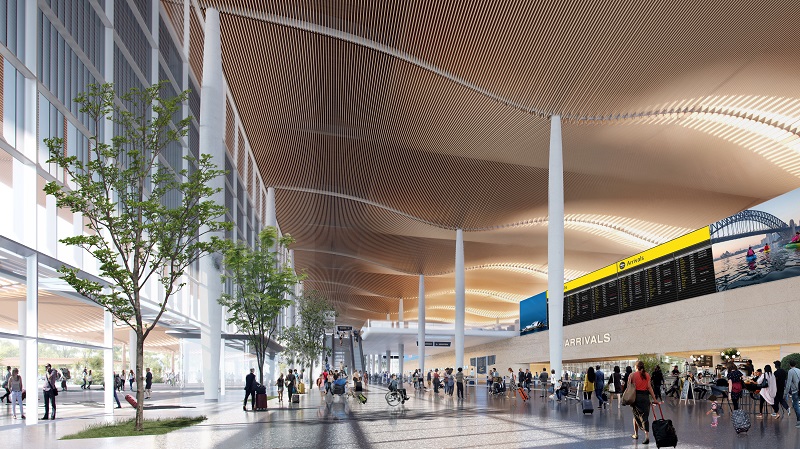With the frankly stunning plans from Zaha Hadid Architects and Cox Architecture
for the new Western Sydney International Airport, it’s perhaps time to take a look at how crucial architecture is to designing an airport that becomes a pleasure rather than a burden to use.
In style, the terminal is somewhat reminiscent of the latest plans for Amsterdam
Schiphol, going for a modernist feel in the vein of iconic villas from Le Corbusier or
Niemeyer.
READ our list of best airlines for 2020
That’s sort of a polite way of saying that, from the outside, it looks like a glass
box with an overhanging flat lid on top, despite the glitzy rendering from Hadid &
Cox that suggests that the wavy wooden roofing structure underneath harkens
back to the Blue Mountains.
But this glass box is actually a remarkably sensible way to build an airport terminal.
Space and flexibility are crucial, as the creaking interiors of many of Australia’s
existing airports show.
Realigning the old model of ranks upon ranks of check-in desks to move to the new model of kiosk plus bag drop is fundamentally complex when there are internal walls involved.
The same is true when a new security modality manifests itself and requires more scanning space.
Here, the kiosk plus bag drop model is designed in, with just a few narrow pillars
breaking up the space, which one assumes will, in fact, be surrounded by the
kiosks rather than standing separately in the middle of check-in.
In the bigger picture, the airport terminal as conceived forms a large, squared-off
U, with gates extending to create a total structure shaped like an elongated H.

This first phase of four, however, is just one of the top sides of the U alongside one
of the two runways.
The eventual H-shape, however, will be massive, seeming to spread nearly the
entire length of the runways (planned for 3700m).
One has to hope that the designers are including eventual plans for some sort of intra-terminal transportation for connecting passengers because a three-kilometre hike between flights is not for everyone.
But the wow factor is there.
Think about the airports people love to use: Singapore Changi. Seoul Incheon. Doha Hamad. And then think about the ones that are… well, let’s say less beloved. Frankfurt. London Heathrow. Pretty much any major airport in the United States.
It’s not just about signature pieces like Changi’s massive indoor Jewel gardens
or Doha’s terrifying #LampBear artwork.
Yes, it’s about creating a space that looks and feels wonderful — but it also has to be easy to get around.
While London Heathrow’s 2008-era Terminal 5, home to British Airways and its
IAG stablemate Iberia, has some airy wow factor when walking into the top check-in
level, that’s only from the car arrivals.
Trains arrive in the sub-basement and it’s then a trek upstairs, and once you’re through security it’s what feels like a purposefully confusing maze of shops, including a mandatory walk back and forth through the terminal to make sure you’ve seen them all before you’re allowed to go downstairs to the gates and/or the strangely infrequent shuttle to the remote satellites.
Similarly, Lufthansa’s creaking Frankfurt base reflects the ongoing hostile relationship
between the airport authority and its key airline tenant, with three long and distant pier spokes emanating by an ugly and unpleasant central hub space without
adequate inter-pier transit and often without moving walkways, despite a risibly
low 45-minute minimum connection time. (I must note that in all my years of travel I
have had bags delayed precisely three times, two of which were connecting via
Frankfurt.).
By and large, people don’t mind walking through a well-designed space, although
adequate provisions must clearly be made for passengers with reduced
mobility, including older travelers.
At the end of the day, ensuring quick, easy connections in addition to a pleasant arrival and departure experience is the fundamental holy grail of terminal design.
























